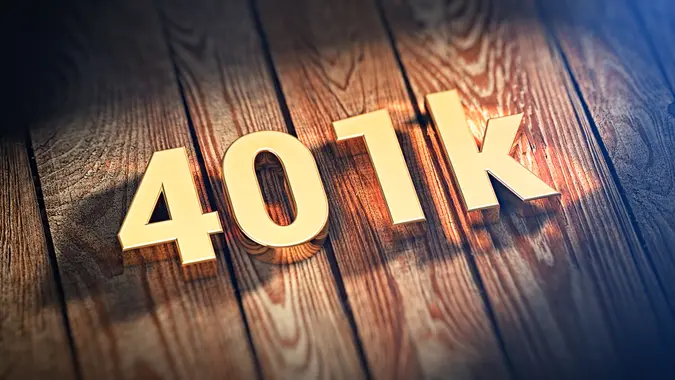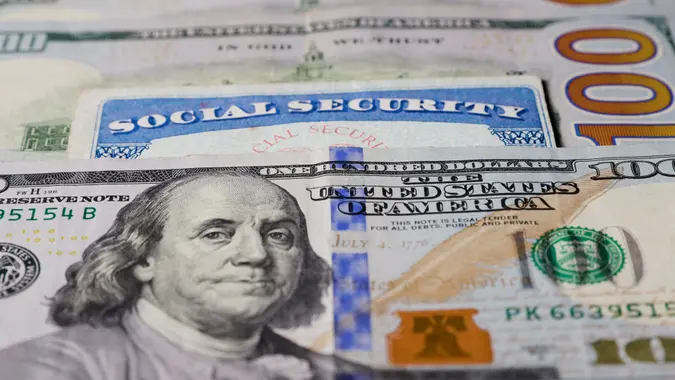Retirement Planning After 50: What You Can Do To Catch Up

Commitment to Our Readers
GOBankingRates' editorial team is committed to bringing you unbiased reviews and information. We use data-driven methodologies to evaluate financial products and services - our reviews and ratings are not influenced by advertisers. You can read more about our editorial guidelines and our products and services review methodology.

20 Years
Helping You Live Richer

Reviewed
by Experts

Trusted by
Millions of Readers
Retirement often feels far off for adults in their 30s and 40s, making it easy to put off saving. But once you hit your 50s, the potential consequences of being unprepared for retirement hit much closer to home.
The good news is that it’s never too late to get serious about saving. Keep reading to find out how to catch up on your retirement planning.
Figure Out How Much You Need To Retire
Planning is easier when you have a specific goal in mind, so a good first step is to figure out how much catching up you need to do.
A retirement calculator, like this one provided by AARP, can help you identify any shortfalls and give you a clear idea of how much more you need to save.
Strategies for Increasing Your Retirement Savings
Now that you have a concrete goal to work toward, focus your efforts on the strategies that’ll provide the biggest returns on your money.
Pay Off Credit Card Debt
Eliminating credit card debt produces guaranteed returns equal to your annual percentage rate. A systematic approach, such as Dave Ramsey’s snowball method, where you pay the smallest balance first, can keep you motivated to knock out the debt.
Max Out Your Tax-Advantaged Retirement Accounts
Tax-advantaged retirement accounts like a 401(k) and IRA let you contribute pretax money and grow your contributions tax-deferred. While both account types have contribution limits, you can make extra, catch-up contributions beginning at age 50.
Max out your 401(k) first if your employer matches your contributions. You can contribute a total of $31,000 for 2025, including the $7,500 catch-up contribution. If you’re aged 60 to 63, your catch-up limit increases to $11,250 for 2025.
The IRS lets you contribute up to $8,000 to an IRA if you’re 50 or older, including the $1,000 catch-up contribution, subject to income limits.
With income above $145,000, the law will require you to put your catch-up contributions in a Roth IRA, starting in 2026, per Fidelity. You won’t get a tax break for contributing, but you’ll withdraw the money tax-free in retirement. Tax-free withdrawals make a Roth IRA a good way to boost your retirement savings even if you qualify for the full traditional IRA tax break.
If you have an eligible high-deductible health plan, a health savings account (HSA) could provide another way to save on taxes while saving for retirement. Your HSA contributions are pretax, and your withdrawals are tax-free as long as you use them for eligible medical expenses. After age 65, you can use any remaining money however you want, with no penalty, although you’ll pay tax on your withdrawals if you don’t use them for medical costs.
The individual contribution limit is $4,300 in 2025. The limit increases to $8,550 if you have a family plan. The IRS allows an additional $1,000 catch-up contribution if you’re 55 or older.
Take Advantage of Other Tax-Friendly Investments
If you have more money to save than you can put into a 401(k) or IRA, consider tax-friendly investments like municipal bonds, which are exempt from federal income tax and might be exempt from state and local income tax as well.
Annuities, which are insurance products that can guarantee income, also provide tax advantages.
Invest In Taxable Investments
If you’ve taken full advantage of tax-advantaged accounts, consider investing with a regular brokerage account.
Diversifying your portfolio with a mix of investments can help reduce risk while allowing you to invest in potentially high-return securities like stocks and stock funds.
 Written by
Written by  Edited by
Edited by 

























